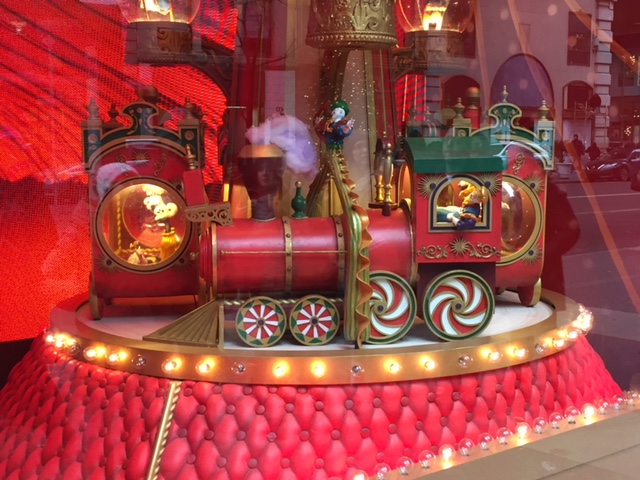
Saks Fifth Avenue in New York.
Photo by Matt Kiefer
To that end, retail businesses -- as well as shopping malls in general -- are seriously rethinking how they operate and present themselves. Kids today have cell phones. They don’t need to go to the mall to meet other kids and enjoy a break from their parents. And millennials just don’t shop as much as previous generations.
The newest attempt to capture the attention of shoppers is focused on experiences, making the store into a destination, not just a place to make a purchase.
Apple is renaming its stores “town squares”. Some of them have
trees
.
Samsung’s
837
store doesn’t actually sell anything, unless you count food in the cafe.
Urban Outfitters has acquired a successful pizza chain, and is considering the idea of putting them inside OU stores, because it’s easy to buy goods online, but “
if you want to eat at the hot new restaurant, you have to leave your
living room
.”
Nordstrom Local
has no clothing racks
. It’s set up to provide concierge level service, catered to a customer’s specific needs.
This idea of a store as an experience may seem like a big gamble, but one time-honored tradition suggests that it’s a successful approach: Christmas window displays.

Macy’s Christmas window in New York, 1917 or 1918
Initially the window displays were straight up product promotions, aimed at tempting passersby, probably moreso if they were shoppers with children. The displays have been animated for more than a century.
But starting in 1938 with Lord & Taylor, holiday store windows started to take on a more abstract nature. Modern windows now rarely serve as a direct promotion of the store’s wares. They seem much more like the amusements provided to keep park attendees happy while they wait in line for rides at Disneyland. When retail stores depend on holiday sales to make up a quarter of their annual revenue, it may seem like an odd decision. Still, the windows draw massive crowds every year.

Macy’s Window Five on Herald Square depicts ‘holiday travel’, with animated boats and trains. It takes a team of up to 200 people most of the year to plan each season’s new window display.

Along 34th Street, the windows depict scenes from the animated video “
Yes Virginia
”.

If there’s any question as to the effectiveness of these decorations, Macy’s estimates that as many as 10,000 people per hour pass by the windows. Research firm NPD estimates that decorated windows make an impact on holiday purchases 24 percent of the time. But even if not, it’s a well executed campaign to build branding and loyalty.
In addition to Macy’s, a number of retail businesses in New York take part in extravagant window displays every November and December, including Sak’s, Barney’s, Lord & Taylor, Henry Bendel, Bergdorf Goodman, Tiffany’s, and Bloomingdale’s.
“Given the inherent abstraction of digital retail, there’s an increasing attraction to actual and physical experience. It’s rooted in memory and simple pleasures, like delight and surprise, especially important emotions during the festive season.”
-- Linda Fargo, Senior VP at Bergdorf Goodman

Lord & Taylor

Lord & Taylor

Lord & Taylor incorporates at least a few products into their displays.
even a map of where to find them
.
"Window displays, and holiday windows in particular, are really effective in helping brands elevate themselves beyond a transactional experience and remind people of the wonders of shopping."
-- Nancy Hansell, senior strategist at Siegel+Gale